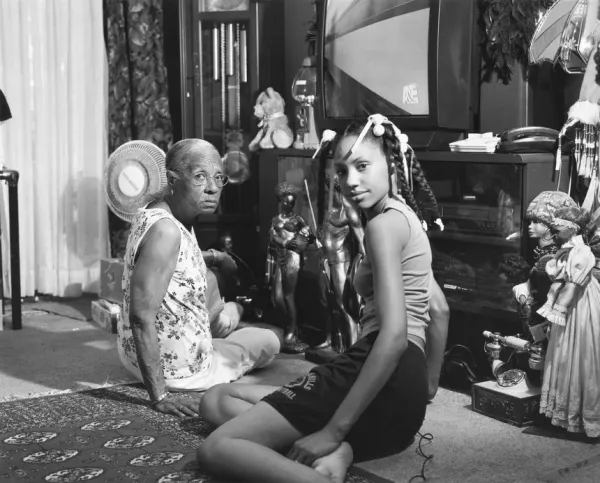From Ally to Co-Conspirator: What’s the Difference?

You’ve read the books. You’ve shared the posts. You’ve shown up to workshops and started having harder conversations with friends and family.
You’ve taken steps toward allyship, and that matters.
But what if there’s more? What if being an ally is only the beginning?
Across racial justice movements, the language is shifting. More and more, we’re hearing the phrase “co-conspirator”. It’s not a trend. It’s a call to go deeper.
In this article, we explore the difference between an ally and a co-conspirator, not to discredit the former, but to highlight what the latter demands. If you’re an ally who wants to move beyond optics and into courageous, accountable action, this guide is for you.
What Is an Ally?
Let’s start here. An ally is someone who recognises their privilege and uses it to support marginalised groups. In the context of race, this usually refers to white or non-Black individuals standing in solidarity with Black people and communities.
Good allies listen, learn, and speak up against injustice. They challenge racism when they see it. They commit to unlearning harmful narratives and amplifying Black voices. They understand that silence is complicity.
But allyship, as commonly practised, often stops short of transformation. It can become passive, performative, or overly focused on identity instead of impact. This is where the concept of co-conspiracy enters the conversation.
What Is a Co-Conspirator?
Coined and popularised by scholar and activist Dr. Bettina Love, a co-conspirator is someone who not only supports the cause, but takes risks to dismantle the systems that uphold white supremacy and racial injustice.
A co-conspirator doesn’t just stand beside you. They stand between you and harm. They use their power not just to advocate, but to intervene, redistribute, and transform.
The shift from ally to co-conspirator is a shift from intention to impact. From belief to action. From safety to risk. From presence to pressure.
Ally vs. Co-Conspirator: Key Differences
Here’s a simple comparison to help clarify the difference:
| Ally | Co-Conspirator | |
|---|---|---|
| Role | Supporter | Active disruptor |
| Focus | Learning and solidarity | Action and accountability |
| Risk | Often low risk | Willing to risk comfort, position, or reputation |
| Power | Acknowledges privilege | Uses privilege to intervene and dismantle systems |
| Visibility | May seek recognition or approval | Focuses on outcomes, not credit |
| Pace | Often moves slowly, avoids conflict | Moves with urgency, especially in critical moments |
This is not about “good” vs “bad” people. It’s about deepening commitment and moving toward sustained action.
Why the Shift Matters
Representation, inclusion, and diversity efforts have gained traction in many institutions and organisations. But without structural change, these efforts often fall flat.
What’s needed now is not just presence, but pressure. Not just learning, but leveraging. Co-conspirators are essential because they:
- Create safety for others at personal cost
- Disrupt the very systems they benefit from
- Refuse to remain neutral or silent in moments of injustice
- Use their access to redistribute resources, not just reframe conversations
For real change to happen, more allies must become co-conspirators.
Signs You’re Still Sitting in Allyship
If you’re not sure where you currently stand, here are a few signs that your allyship might be plateauing:
1. You Avoid Risk
You speak out on social media but stay quiet at work. You read books but don’t challenge colleagues. You want change, but not if it makes things uncomfortable.
2. You Expect Praise
You feel discouraged when your efforts aren’t recognised or thanked. You might get defensive when asked to do more, even if the critique is valid.
3. You Stay in Learning Mode
You keep reading, attending panels, and listening to podcasts, but struggle to translate that knowledge into tangible action.
4. You Prioritise Comfort
You avoid hard conversations with family. You steer away from conflict. You support the cause in theory, but not in practice.
These behaviours are common, but they can’t be the end point.
How to Move From Ally to Co-Conspirator
Ready to go deeper? Here are six powerful ways to make the shift:
1. Move Toward the Fire
Co-conspirators don’t avoid discomfort, they lean into it. That means:
- Speaking up in rooms where others stay silent
- Challenging policies that uphold systemic racism
- Intervening when you see harm, even if it’s subtle
- Standing beside Black people when they take a stand, especially when there’s backlash
You won’t always get it right. But neutrality is not an option.
2. Redistribute Power and Resources
Use your position, network, or platform to create access for others. This might look like:
- Funding Black-led organisations or collectives
- Giving up a speaking or teaching opportunity so a Black colleague can lead
- Using your influence to challenge biased decision-making structures
- Paying Black creatives fairly and crediting them publicly
Co-conspirators don’t just open doors, they hand over the keys.
3. Accept Correction Without Ego
Co-conspirators stay teachable. When Black colleagues or friends give you feedback, resist the urge to defend yourself. Instead, pause. Listen. Reflect. Apologise. Adjust.
The work is not about your feelings, it’s about your impact.
4. Take On Some of the Labour
Do not expect Black people to educate you, organise for you, or manage your emotional reactions. Step up to the plate. That could mean:
- Facilitating anti-racism learning for your peers
- Offering emotional support to other white or non-Black people doing the work
- Researching and sharing resources proactively
- Volunteering time or skills to support Black-led projects
Co-conspirators do not wait to be asked.
5. Stay Engaged Between Crises
When the headlines fade, do you disappear?
Sustained commitment means showing up consistently. It means keeping anti-racism work part of your daily life, not just your public persona. Keep building relationships. Keep checking your bias. Keep learning and applying what you learn.
Justice is not a moment. It is a long road.
6. Support Black-Led Work Without Taking Over
Co-conspirators know how to stand with, not in front of. You don’t need to lead every conversation. You don’t need to be the loudest voice in the room. Show up, listen, and offer support without centring yourself.
At platforms like theBLKGZE, this means:
- Sharing our work without erasing our voice
- Encouraging others to engage directly with Black creatives and storytellers
- Supporting behind the scenes, financially or logistically
- Uplifting the mission without making it about you
Co-conspirators build with humility and accountability.
Real Talk: You Will Mess Up
This shift is not easy. It requires unlearning, re-learning, and owning your missteps. You will get it wrong sometimes. You might cause harm. You may be called out.
That’s part of the process.
What matters most is how you respond. Co-conspirators do not run from correction. They lean in, learn, and come back stronger.
This is not about being perfect. It is about being present, responsible, and brave.
Final Thoughts: The Invitation to Go Deeper
From ally to co-conspirator is a journey and a choice.
Allyship says, “I see you.”
Co-conspiracy says, “I’ve got you.”
Allyship says, “I support you.”
Co-conspiracy says, “I will stand between you and harm.”
Allyship is about intention.
Co-conspiracy is about impact.
At theBLKGZE, we don’t need applause. We need action. We don’t need followers. We need people willing to walk alongside us when it counts most.
So if you’ve been sitting in allyship, thank you. But now it’s time to ask yourself:
What am I willing to risk for the world I say I believe in?
Because the truth is change does not come from comfort. It comes from co-conspirators.
We hope you’ll join us.





